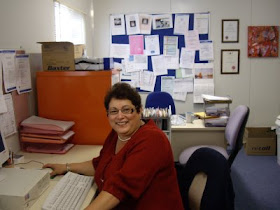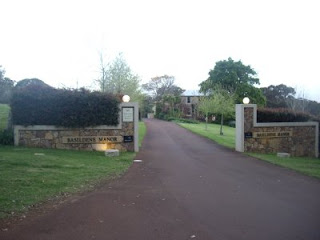
Birth of Logan Mark
This birth story has been written with the permission of Nikki & Scott. Thank you.
Firstly I will congratulate my son Scott and his fiancé Nikki on the birth of their son on the 19th October at 0115, weighing in at 3420gm. Nikki has always wanted an epidural, with the birth of Jessica (8hr labour) their first child, she also had an epidural which was not very effective and Nikki ended up with an episiotomy and Neville Barnes forceps – not very nice. Why do some women want an epidural? – Well that is simple, as Nikki would say “I don’t do pain” and “I am the biggest sook”. Now I don’t agree with Nikki’s choice of terminology, because pain is whatever the woman/client says it is and epidurals have a place in childbirth, because it is all about informed choice. The aim is to achieve a safe spontaneous vaginal delivery (SVD) or birth. As midwives our role is to inform women of their options and assist them to achieve the birth they choose. Nikki wanted a normal birth without an episiotomy and that was pain free. The only way to have a pain free birth is by having an epidural, all other forms of pain relief do not take the pain away completely they just knock the top off the mountain. In saying all this, epidurals are not completely foolproof; sometimes they do not work or only partially work as Nikki found out. Full credit to the excellent midwife who was looking after Nikki, who did everything possible to make sure that Nikki’s epidural was working effectively, finally after all possible top-ups etc Nikki was comfortable, now we could concentrate on getting more effective contractions.
Nikki called me at about 3pm not sure if her waters had broken, I was on my way to see my friend and decided to call in a see how Nikki was going – sure enough there was a wet patch on the bed, and most women hate the thought that they may have wet the bed, heaven knows why, you have a baby constantly pushing on your bladder, it would not be surprising at 38+5 days. Anyway after resting on the bed with a pad on for 20 minutes the pad was wet, had a sweet odour and was clear. The baby was moving nicely, the head was engaged, and there was a good fetal heart. There were no apparent contractions and Nikki described having a cramping feeling, so we decided to keep her walking around the house. I decided to go home, which is only 10 minutes away, and finish cooking my dinner and we would share it. Scott’s sister Faye and Brendon & their children would come over and we would pass some time – Nikki reminded me that she still wanted an epidural and not to leave it too late, I also said to Nikki that it would be beneficial if she was in established labour before she had the epidural to ensure an vaginal birth and she was agreeable.
About 6:30 Nikki’s pad changed colour, it was meconium stained (the baby has done a poo in-utero), lightly stained meconium. Nikki was still not contracting regularly or strongly, we rang the hospital, and were advised to make our way in. There was mild disappointment in the air, meconium stained liquor, and this changes things now.
We arrived at the Labour and Birth suite at about 1945hrs – Scott was dropping off Jess and would meet us there shortly. Nikki was great, we had a good talk in the car about expectations, epidurals and how to push effectively when you have an epidural in place so as to avoid having an episiotomy. Nikki laughed at my analogy – as you can’t feel anything, close your eyes and imagine that you are totally constipated and you have to push the biggest shit out – that’s what you have to do.
No sooner were we there when Nikki was assessed, hooked up to the CTG, examined – it was good to see that she was 4cm dilated, however the head was -3. IV inserted and bloods taken. Nikki was happy to stand next to the bed whilst being monitored; it was now meconium 2, which meant continuous fetal monitoring. Her contractions were still not strong, getting more uncomfortable for Nikki, so the epidural was arranged. The CTG had good variability however a couple of late decelerations – the decision about using an oxytocics was made, to increase the strength and frequency of the contractions, due to the meconium and late decelerations. Nikki was happy to get things going, anything to make it work rather than having a caesarean section. Nikki was coping really well, now comfortable with her epidural almost working effectively – it was denser block on one side, her left leg was numb and difficult to move.
Scott was like a cat on a hot tin roof – he had his own expectations, and did not share them. He is 6’+ and seems like a gentle giant and he felt out of place in the delivery suite, although he very much wanted to be there. Like most men he was busy comparing the CTG machine to the equipment he used when working out in the bush with the geologist comparing it to the seismograph. This did make me smile; he was constantly eating, lollies, biscuits, fruit and pacing the floor.

The baby was difficult to monitor, and I really could not understand why, as Nikki is tall and fairly slim – certainly not obese – therefore theoretically should be easy to monitor, however the “little fella” was playing possum with us. The CTG baseline rate was about 145bpm, variability was good however we were getting complicated variable decelerations. The pressure was on; “I don’t want a caesarean section” was Nikki’s lament. It was time to reassess due to the complicated variables, at approximately 1130pm Nikki was still 4cm, head 2-, so the head had come down, it was really no surprise that the cervix was still 4cm as the contractions really were not yet effective or strong enough. The decision was made to continue and reassess in 30 minutes. We changed positions, left lateral, right lateral, then upright to try and improve the trace. Another top-up as well as self administered top-ups were given, Nikki still has an uneven block, however she was more comfortable now. The syntocinon was titrated upwards as per the protocol and Nikki’s contractions finally kicked in, 4:10 strongly, however with this came more complicated variable decelerations, the registrar decided to tickle the baby’s head, to ascertain if the baby’s heart rate would accelerate which would be equivalent to a 7.25 pH and therefore the baby is not hypoxic. Hooray! The little fella’s heart rate went up to 165bpm, which bought us some more time.
At 0100hrs the midwife decided to put a scalp electrode on the baby’s head, so it would be easier to monitor him – and to her/our surprise Nikki was fully dilated – fantastic – that is an efficient uterus - she did a test push, Nikki was fantastic, she visualised and pushed well. It was time to birth, Nikki, Scott and the midwife were happy for me to catch – as was discussed earlier.
It was a wonderful vaginal birth, intacted perineum – little Logan Mark was born at 0115hrs weighting 3420gms.

On reflection talking to Nikki and Scott a few days later – Nikki found the birth easier than Jessica’s birth and was grateful to have the midwife and myself present, “everything was easy, casual and relaxed – it was awesome!” Nikki said that she had back pain for at 5 days post the epidural.
Scott reflected that he thought that there would be more blood and gore! He cut the cord which gave him a sense of fatherhood. However, Scott did say that he felt superfluous through the whole process. I wonder when women have an epidural does it change the focus for men, as the level of support may change due to the level of pain being different. I did notice that both Nikki and Scott watched TV and debated which movies to watch.
As for me...............This was as always a memorable experience. It is a privilege to help birth your grandchildren, to support the women of your family and share your knowledge, expertise, love, warmth, caring, just being there. It is truly a magnificent moment – a true reminder of the miracle of birth and the power of a woman’s body, truly spectacular.

It’s all about what the woman wants!
.JPG)




































